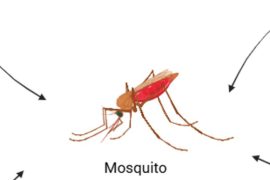Peripheral neuropathy affects over 3 million people in the United States annually, leading to pain and loss of sensation in nerves outside the brain and spinal cord. Salk researchers have made a breakthrough in repairing damaged nerves in mice suffering from peripheral neuropathy. They identified the protein Mitf as a key player in activating the repair function of Schwann cells, which are specialized cells in the peripheral nervous system.
Peripheral neuropathy can result from various causes such as diabetes, trauma, genetic diseases, and infections. The peripheral nervous system, responsible for sensations throughout the body, can repair damage, unlike the central nervous system comprising the brain and spinal cord. The mechanisms behind this repair process have been poorly understood.
“We wanted to know what mechanisms control damage response in peripheral nerves under varying conditions–like acute trauma, genetic disorders, or degenerative diseases,” states senior author Professor Samuel Pfaff. “We found that Schwann cells, which are special cells in nerves that protect and support neurons’ axons, enter their repair state because of a pathway mediated by the protein Mitf.”
In studying mouse models of Charcot Marie Tooth disease (CMT), a hereditary neuropathy, researchers observed that Schwann cells involved in repairs had elevated levels of Mitf in their nuclei. Mitf, initially located in the cytoplasm, moved to the nucleus in response to neuronal damage, directing Schwann cells to initiate repairs. Removing Mitf hindered nerve repair in both trauma and CMT cases, highlighting its crucial role in peripheral nerve repair and regeneration.
“Going into this project, I thought that when you have a genetic nerve degeneration disorder, cells are dying and recovery isn’t possible,” states first author Lydia Daboussi, a former postdoctoral researcher in Pfaff’s lab and current assistant professor at UC Los Angeles. “But our findings show that there are gene programs turned on by Mitf that repair some of the damage done in those chronic disease scenarios, and when you turn those programs off, disease symptoms get worse.”
The researchers likened Mitf to a “fire extinguisher” within Schwann cells, lying dormant until damage occurs. Upon damage detection, Mitf swiftly activates the cell’s repair functions. Remarkably, Mitf orchestrated nerve repairs even during chronic diseases like CMT. This discovery sheds light on the intricate processes involved in peripheral nerve repair and offers potential avenues for developing therapeutic interventions for peripheral neuropathy.
“Harnessing Schwann cell repair programs has great potential in treating chronic diseases,” states Pfaff, also the Benjamin H. Lewis Chair at Salk. “It’s possible that with targeted therapeutics, we can prompt more Schwann cells to repair peripheral nerve damage and push those repairs to completion in chronic cases. Furthermore, now that we have a better grasp on the repair mechanisms, we can see if it’s possible to initiate repairs in the brain stem and spinal cord, too.”
Disclaimer:
The information contained in this article is for educational and informational purposes only and is not intended as a health advice. We would ask you to consult a qualified professional or medical expert to gain additional knowledge before you choose to consume any product or perform any exercise.







